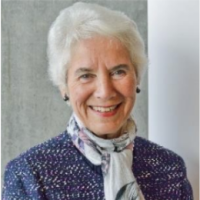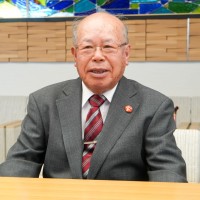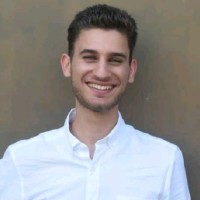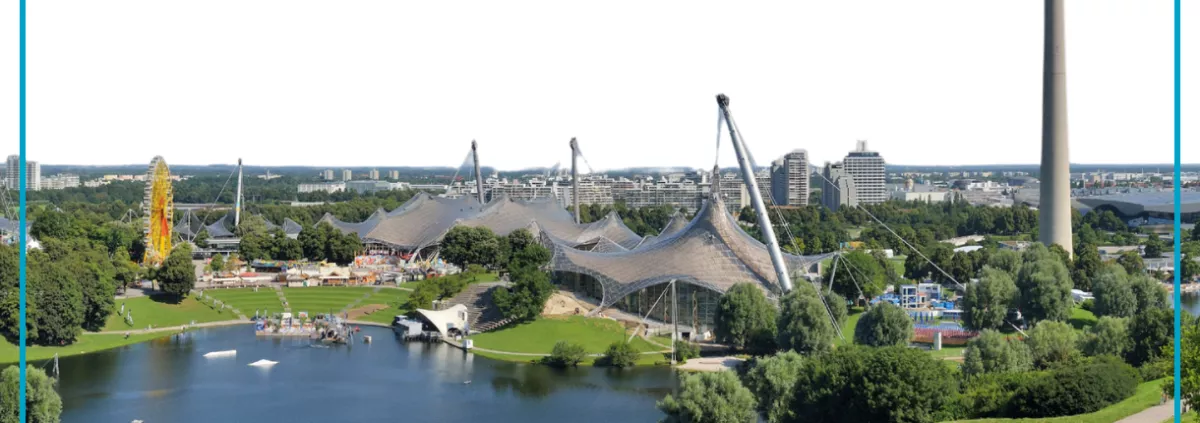80th Anniversary of the end of the Second World War
- 15:26 - 16:14, 6 November
- Presentation
Speakers
-
 Eva Clarke BEM
Eva Clarke BEMEva Clarke BEM
Speaker
Eva was born in Mauthausen concentration camp, Austria, on 29th April 1945. She and her mother
are the only survivors of their family, 15 members of whom were killed in Auschwitz-Birkenau:
three of Eva’s grandparents, her father, uncles, aunts and her 7-year-old cousin, Peter.
In 1933, when Hitler came to power, Eva’s father Bernd Nathan left Hamburg for Prague where
he eventually met her mother Anka Kauderová. The couple married on 15th May 1940. In
December 1941 her parents were sent to Terezín (Theresienstadt). They were to remain there
for three years, which was very unusual: they were young, strong and well able to work.
During this time, and despite the sexes being segregated, Anka became pregnant with a son,
Dan. When the Nazis discovered this fact, Eva’s parents were forced to sign a document stating
that when the baby was born, it would have to be handed out over to the Gestapo to be murdered;
it was the first time her mother had heard the word 'euthanasia'. However, in the event, her brother
died of pneumonia at two months of age. And his death meant Eva’s life – had Eva’s mother
subsequently arrived in Auschwitz-Birkenau with a baby, she would have been sent immediately
to the gas chambers. But because she arrived there without a baby and although by this time she
was again pregnant with Eva – but not visibly – she survived.
Eva’s mother was in Auschwitz–Birkenau from 1st-10th October 1944. She had, incredibly,
volunteered to follow her husband who was sent there. Tragically, she never saw him again and
he never knew she was pregnant. She discovered after the war that he had been shot on 18th
January 1945 – less than a week before the liberation by the Red Army.
As Anka's pregnancy was not visible and she was deemed fit for work, she was sent out of
Auschwitz to work in an armaments factory in Freiberg, near Dresden. She was to remain there
for the next six months – by now getting weaker while at the same time, becoming more visibly
pregnant.
By the spring of 1945 the Germans were retreating and evacuating concentration and slave labour
camps. Eva’s mother and her fellow prisoners were forced onto a train: not cattle tracks this time
but coal trucks – open to the skies and, obviously, filthy. They weren’t given any food and scarcely
any water during what was to become a 3-week nightmare journey around the Czech countryside.
The Nazis didn’t know what to do with their 'dying cargo'.
The train eventually arrived at Mauthausen concentration camp. Anka had such a shock when
she saw the name of this notorious camp that her labour began and Eva was born on a cart, in
the open, without any assistance, medical or any other kind. By this stage, Anka weighed about
5 stone (35 kg) – she had the appearance of a scarcely living pregnant skeleton. And Eva weighedabout 3lbs/1.5 kg. If the camp's gas chambers hadn’t been blown up on 28th April 1945 and the
Americans hadn’t liberated Mauthausen just days after Eva’s birth, neither mother or child would
have survived.
Eva and her mother returned to Prague, where Anna married Eva’s stepfather in February 1948.
In the same year they emigrated to the UK and settled in Cardiff. Eva married an academic lawyer
in 1968, has two sons and has been living in Cambridge ever since. -
 Shigemitsu TanakaCo-Chairperson, Nihon Hidankyo, and President, Nagasaki A-bomb Survivors Council
Shigemitsu TanakaCo-Chairperson, Nihon Hidankyo, and President, Nagasaki A-bomb Survivors CouncilShigemitsu Tanaka
Counsellor
Co-Chairperson, Nihon Hidankyo, and President, Nagasaki A-bomb Survivors Council
Shigemitsu Tanaka was born in 1940. At age 4, he experienced Nagasaki atomic bombing, located some 6 km from the blast center with 5 family members. On the day, he was playing with younger brother and his grandfather under a persimmon tree in the front yard. He got so scared and ran to his mother, screaming “The frontal mountain was bombed!” All windowpanes of the house were broken into fragments and all sliding doors blown away. Fortunately, no one was injured, but three days after the bombing, his mother went to the hypocenter to check on an acquaintance's safety. After that, she suffered liver and thyroid disorders, leading to repeated hospitalizations and died of liver cancer. After graduating from high school, Tanaka worked at the Japanese National Railways (now JR) and participated in the peace movement. Since retirement, he has contributed to the Hibakusha movement for the abolition of nuclear weapons and for state compensation for the damage caused by the bombings. After 2018, he is working as a Co-Chairperson of Nihon Hidankyo and as President of Nagasaki A-bomb Survivors Council. As Hibakusha he has been working toward the abolition of nuclear weapons, together with many citizens.
-
 Toru YamaguchiCouncilor, the Nagasaki A-bomb Survivors’ Council, and Member, Second-generation Hibakusha Association
Toru YamaguchiCouncilor, the Nagasaki A-bomb Survivors’ Council, and Member, Second-generation Hibakusha AssociationToru Yamaguchi
Counsellor
Councilor, the Nagasaki A-bomb Survivors’ Council, and Member, Second-generation Hibakusha Association
Toru Yamaguchi was born on July 3, 1960, as second generation Hibakusha of Nagasaki. From April 1984 to March 2024, he worked for the educational division in Nagasaki Prefectural Government. At the time of retirement, he served as chief administrative officer at Nagasaki Prefectural Isahaya Special Needs School. While working, he engaged in citizen peace movements and teachers’ union activities, serving as secretary general of the Nagasaki Prefectural High School teachers and staff union, among other roles. He now focuses on researching and compiling the history and testimonies of atomic bomb survivors in Nagasaki, including family members and damages caused by radiation, while aiming to connect this work to activities contributing to anti-war and peace efforts. Currently he serves as Councilor for the Nagasaki A-bomb Survivors’ Council and as a member of second-generation Hibakusha association.
-
 Bradley LangerPublic Affairs Manager, Holocaust Educational Trust
Bradley LangerPublic Affairs Manager, Holocaust Educational TrustBradley Langer
Speaker
Public Affairs Manager, Holocaust Educational Trust
Bradley Langer is the Public Affairs Manager at the Holocaust Educational Trust. He began his career as Campaigns Director at the Union of Jewish Students, where he worked with the Government and universities to combat antisemitism on campus. Bradley joined the Holocaust Educational Trust in 2021 and now works with Government, parliamentarians and civil society leaders to ensure that the Holocaust is remembered, its lessons are never forgotten, and antisemitism is challenged.
